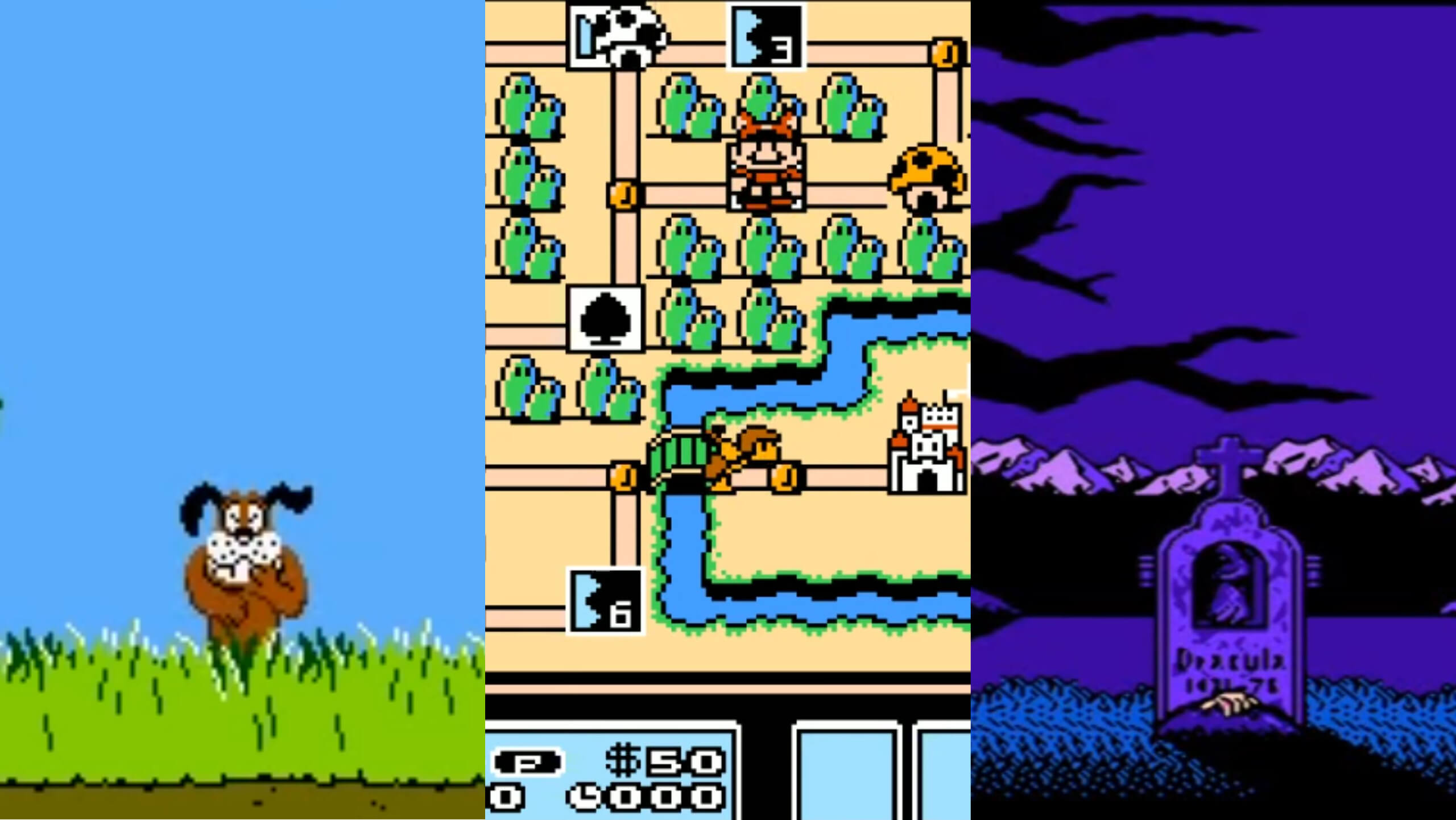As games (and the gaming industry) grow larger and more complicated, it’s easy to look back with nostalgia on the simple pleasures of the best NES games. However, even those seemingly simple NES games often held secrets that went undiscovered for years.
While publications like Nintendo Power made a few early NES secrets relatively common knowledge, most NES gamers had to rely on word of mouth to discover some of gaming’s earliest Easter eggs, major glitches, and other strange secrets. As such, even those who stumbled upon those secrets at that time really didn’t have a great way to tell the world about them. It wasn’t until decades later (if ever) that more gamers realized that some of the games they spent their childhoods playing contained hidden details that even dedicated players probably never would have found.
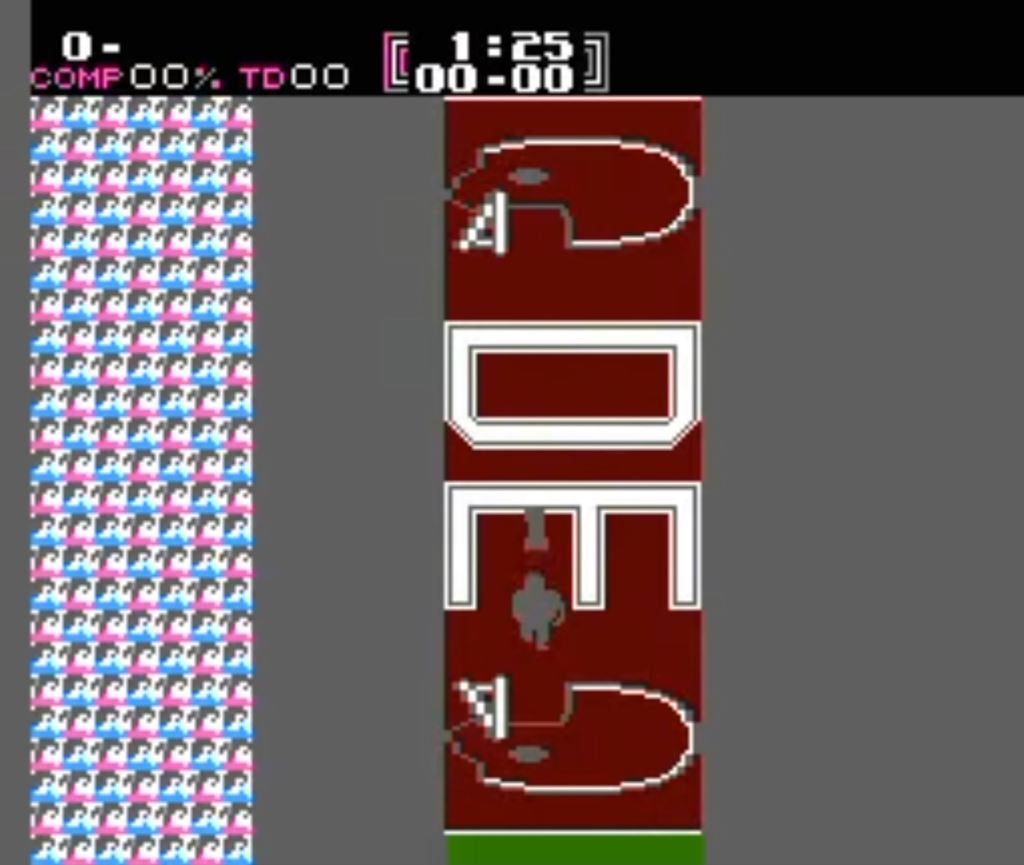
While most people consider picking the Bo Jackson-led Raiders to be cheating in Tecmo Bowl, that classic sports game does have actual cheat codes. In fact, one of the game’s most obscure cheats allows you to play as an “invisible” football team.
Technically, entering the code 397BFFA5 into Tecmo Bowl’s password system allows you to play as a gray team on a gray field, which renders those gray team players practically invisible. It’s not entirely clear what’s actually happening when you enter this code, but it seems like you’re basically creating a new team that the game doesn’t properly recognize and doesn’t know how to render. It’s still a hilarious way to play the game, though.
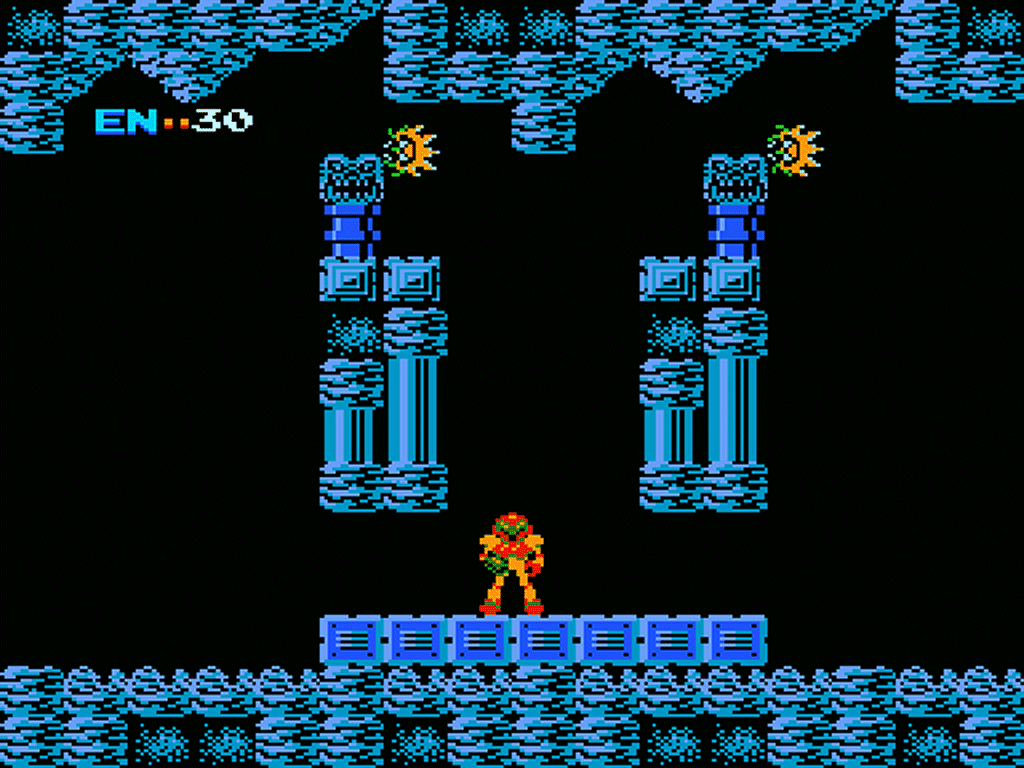
14. Metroid Contains an Odd (and Very NSFW) Password
Metroid is filled with some of the strangest and most famous cheat codes in NES history. However, only a handful of fans know about the strange things that can happen when you enter “Engage Ridley Mother F*****” (with the stars replaced with the appropriate swear word letters) in the game’s password screen.
What exactly happens after you enter that code depends on what version of the game you’re playing. Some fans swear this code will allow you to skip a portion of the original NES game, but most versions of Metroid (including the Switch version) simply load you into a bugged version of the game or crash the game outright when you try to enter that NSFW code. In case you’re wondering, this effect is actually triggered by the fact that Metroid‘s password system relies on ranges of characters rather than specific password characters. In other words, you could achieve the same effect with other series of letters and numbers. This one (rather hilariously) just happens to work.
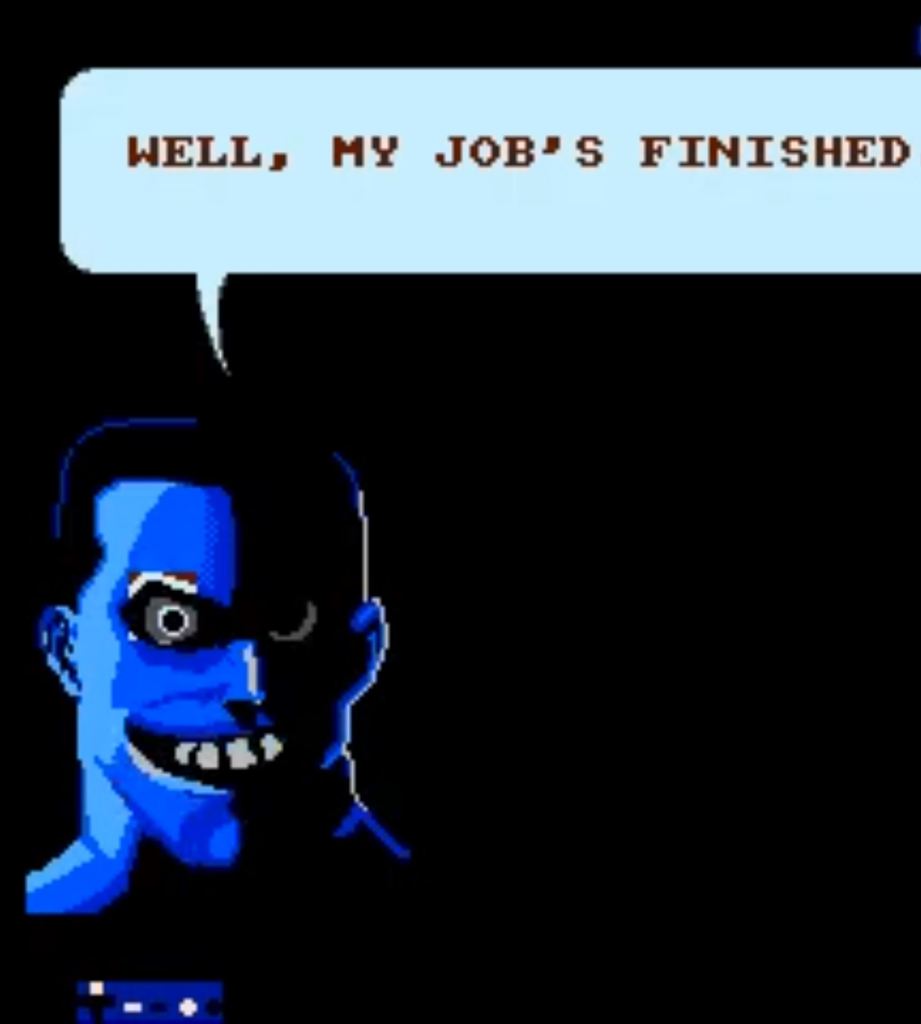
13. The Punisher’s Ending Screen Hides a Creepy Easter Egg
The Punisher NES game isn’t very…good, but it was certainly a novelty to be able to play as such a dark comic book hero in an NES title. Of course, even those who grew up with the game probably didn’t know that it contained one of the strangest ending screens in NES history.
When you reach The Punisher’s default end screen, hold “Up, B, and Select” on your controller. For some reason, that combination of inputs changes Frank Castle’s default face into the monstrosity you see above. It seems that one of the game’s artists just couldn’t resist sneaking this design into the final product.

12. Punch-Out’s Most Unusual Password Was Actually a Real Phone Number
Punch-Out is another one of those NES games that actually contains quite a few fascinating (and helpful) cheat codes. However, one of the game’s most unusual cheat codes initially appears to do nothing at all.
If you enter the code “800 422 2602” in Punch-Out’s password screen, you’ll trigger an 8-bit version of a busy signal that will play in the background. More than a simple gag, that password was actually Nintendo of America’s old customer service phone number. If more fans had known that back in the day, they maybe could have asked Nintendo reps for help with Mike Tyson.
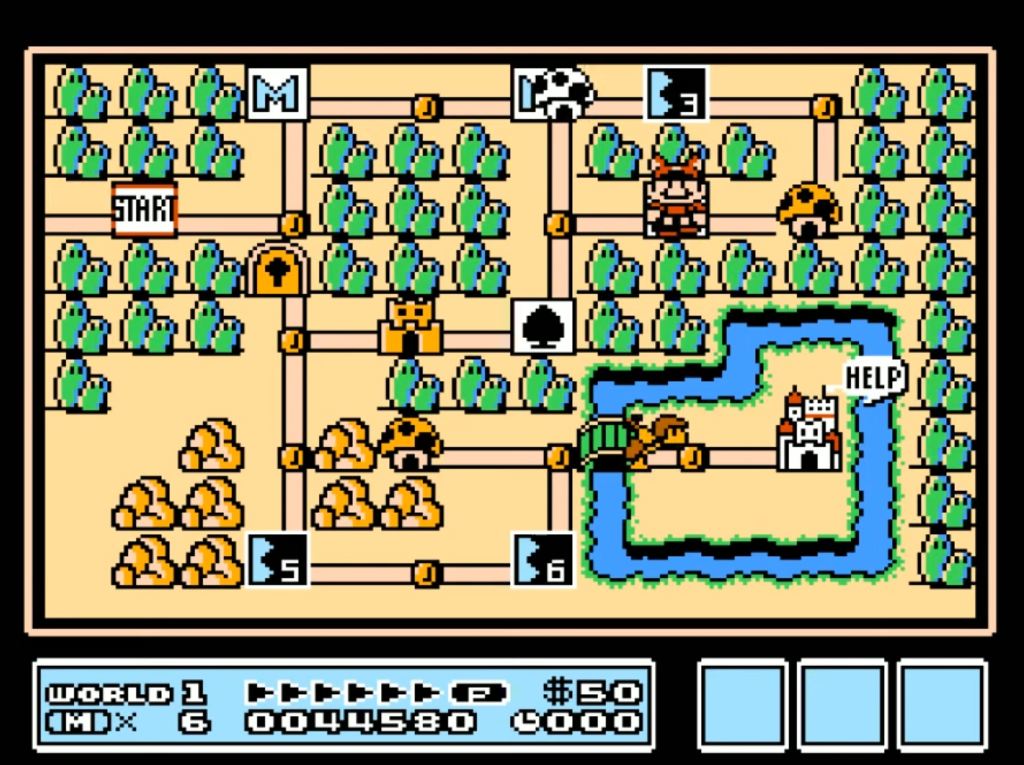
11. You Can Enter a Special Black and White Mushroom House In Super Mario Bros. 3
Super Mario Bros. 3 was arguably Nintendo’s most ambitious game up until that point, so it shouldn’t be too much of a surprise to learn that it contains quite a few secrets. However, one of the game’s greatest secrets didn’t become slightly more common knowledge until years after the game’s release.
See, it’s actually possible to unlock a special white-and-black version of Toad’s House on the world map if you collect at least a certain number of coins in specific levels. For instance, you need to collect at least 44 coins in Level 1-4 or at least 30 coins in Level 2-2 to spawn the house. Both the placement of these levels and the exact number of coins you need to collect in order to spawn the special mushroom houses are so odd that it’s really no wonder more players didn’t even accidentally stumble upon this secret back in the day. Those who did probably had no idea of how to replicate it.

10. Several of Rare’s NES Games Are United by Hidden Initials
If you name your character either Paul or Rachel in some versions of California Games, you’ll see the text “PP & RME” appear on the sidewalk during the rollerskating level. No explanation for these initials is given, but it’s certainly worth noting that they appear in some form (even if it’s just via hidden code) in various other Rare-developed NES games, including Marble Madness, Wheel of Fortune, and Wizards & Warriors.
Years later, it was discovered that those initials are actually a reference to Paul Proctor and Rachel M. Edwards: two programmers who worked on all of those games. While hidden initials are hardly a rarity in gaming, it’s pretty funny to see how determined they were to get part of their names into those projects and form their own little connected universe.
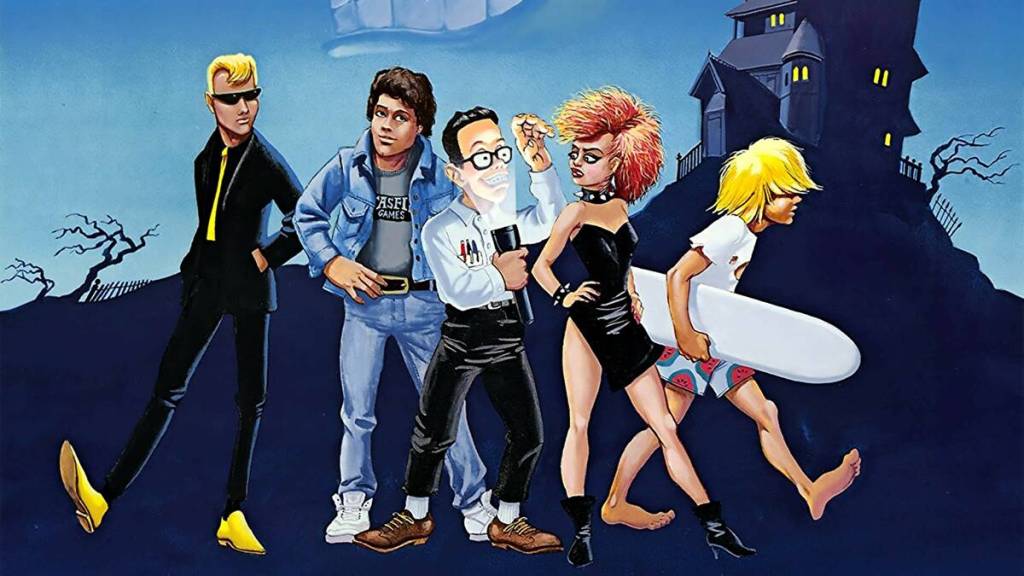
9. Maniac Mansion Features Some Familiar Themes
As we’ve previously discussed, the NES version of Maniac Mansion had to be censored across the board in order to meet Nintendo’s strict content standards. While that means that quite a bit of content was cut from the original versions of that game, Maniac Mansion‘s unlikely NES port does feature a few pieces of unique content that include some hilarious audio Easter eggs.
Look for the arcade room in the NES version of Maniac Mansion and insert a quarter into the Meteor Mess machine. When you do so, you’ll trigger the arcade game’s theme, which is actually the first few notes of Super Mario Bros.’ theme. Interestingly, the NES version of the game also features a chiptune version of the Indiana Jones theme that is triggered when you call the Meteor Police.

8. The Lion King Hides One of the Strangest Difficulty Options Ever
Aside from being the last official NES game released in the US, the NES version of the Lion King is honestly pretty forgettable (or worse) across the board. However, that version of the game does include an absolutely bizarre hidden difficulty setting.
To unlock this setting, you first need to trigger the game’s elaborate Invincibility Code, which actually requires you to complete part of the game, exit the title, and then reload it in a certain spot. While following those cheat code steps, though, don’t reload the game. Instead, go to the “Options” menu, hold either “Up” or “Left,” and press the “A” button. That will change the game’s current Skill Level to an option called “Boy Love.” Whatever the joke there may have been is probably best left undiscussed.
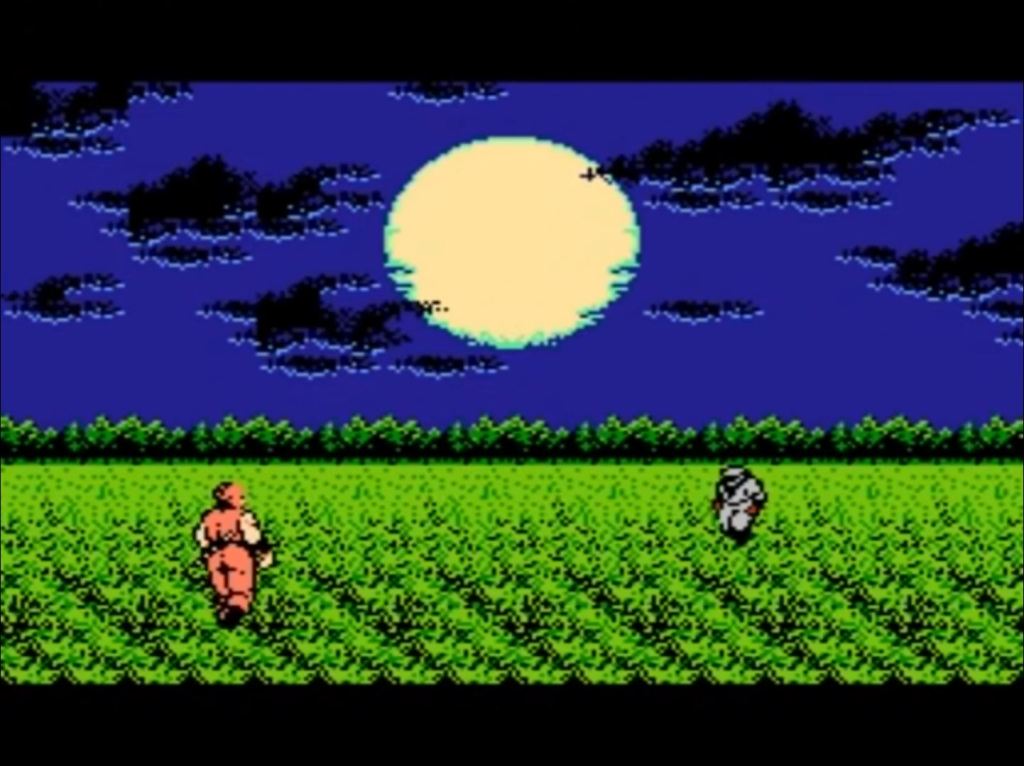
7. An Overpowered Move Makes Ninja Gaiden Much Easier
The original Ninja Gaiden is widely considered to be one of the hardest NES games ever made. In recent years, though, some Ninja Gaiden fans have discovered that the game contains a (possibly unintended) hidden move that makes even the title’s toughest boss fights somewhat trivial.
By holding “Down” and the slash button after you perform a basic jumping slash, you can actually perform a series of rapid air attacks that essentially eliminate the otherwise required cooldown period between basic slashes. While this maneuver is likely a glitch, it’s helped many fans (including speedrunners) get past this brutally challenging classic.

6. Duck Hunt’s Forgotten Multiplayer Mode Is Perfect For Trolls
While many NES gamers who grew up with a sibling probably know about this trick, it’s worth highlighting it for those who remain blissfully unaware that Duck Hunt features a unique second-player option seemingly intended for trolls.
If you plug an NES controller into the console’s port while playing Duck Hunt’s “Game A” mode, you can use that controller to manipulate the flight path of the in-game ducks. While that information was actually tucked away in the game’s manual, most NES fans recall discovering it by accident or simply never finding out that option existed until years later. As noted above, though, this was a favorite trick among older siblings who wanted to get in on (or ruin) the fun.
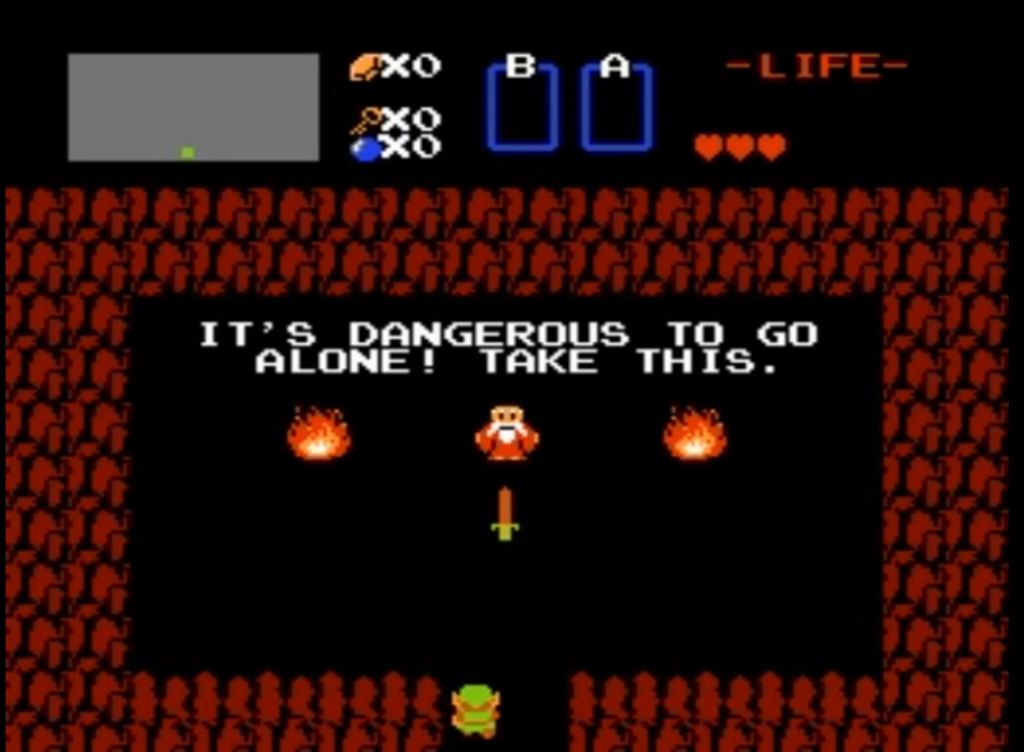
5. The Legend of Zelda’s Dungeon Layouts Spell the Name “Zelda”
Most of you probably know that Zelda contains a hidden “second quest” that changes some elements of the base experience. What you might not know is that the modified dungeon layouts of that second quest also contain a clever Easter Egg.
Take a look at the layouts for the first five dungeons of The Legend of Zelda’s second quest. Notice anything unusual? No? Well, try rearranging the layouts of those dungeons in this order: Level 5, Level 1, Level 3, Level 4, and Level 2. Do so, and you’ll find that those dungeons actually spell out the name “Zelda.” Aside from the obvious reference, it’s worth pointing out that you can actually enter the name “Zelda” to trigger the second quest from the start.
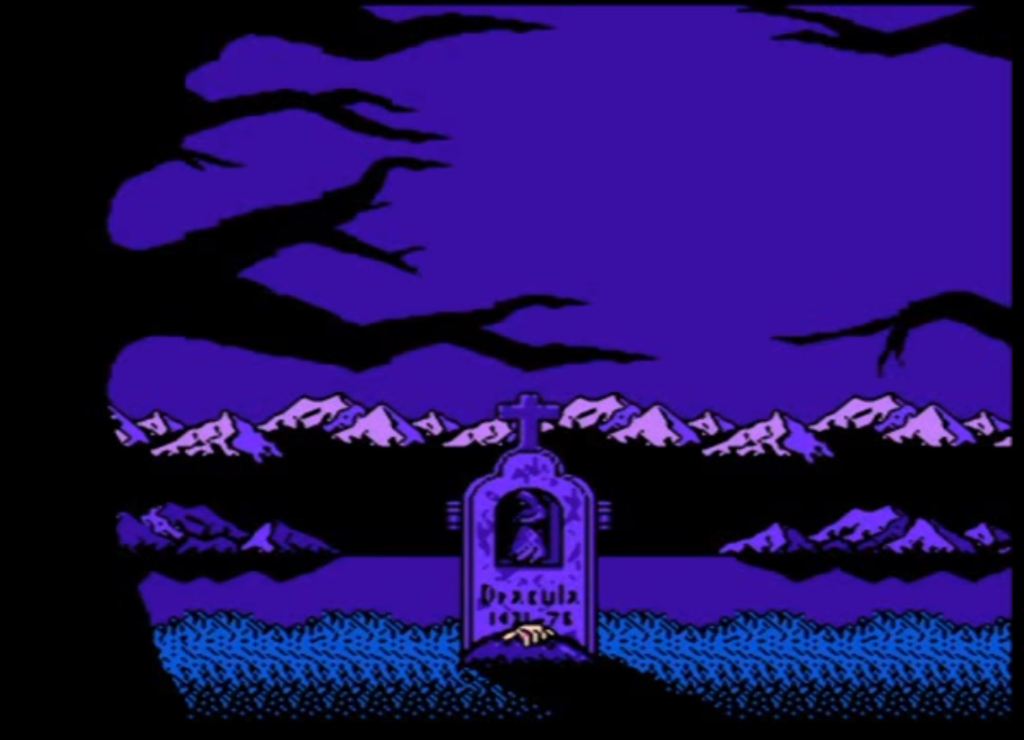
4. Castlevania II: Simon’s Quest Features Secret Endings That Are Nearly Impossible to Unlock
Simon’s Quest is widely considered to be not just the black sheep of the Castlevania franchise but one of the most confusing games of the NES era. Even modern gamers will struggle to beat that game without help from a guide. That’s also why few people know that Simon’s Quest contains two secret endings designed to reward those who not only beat the game but do so in record time.
If you beat Simon’s Quest in 15 in-game days or more, you’ll trigger a “Bad” ending in which both Dracula and Simon die during the game’s final battle. Manage to beat the game in 8-14 in-game days, and you’ll trigger a “Normal” ending in which Simon succumbs to his curse shortly after that final battle. If by some miracle (or cheating) you manage to beat the game in less than 8 in-game days, you’ll trigger the “Best” ending, which not only suggests that Simon survives his curse but ends with an animation of Dracula’s hand rising from his grave.
Interestingly, all of those endings feature strange translation issues and visual inconsistencies that suggest elements of the “Normal” and “Best” endings should actually be swapped. It’s almost like the developers never expected most people to see those conclusions.
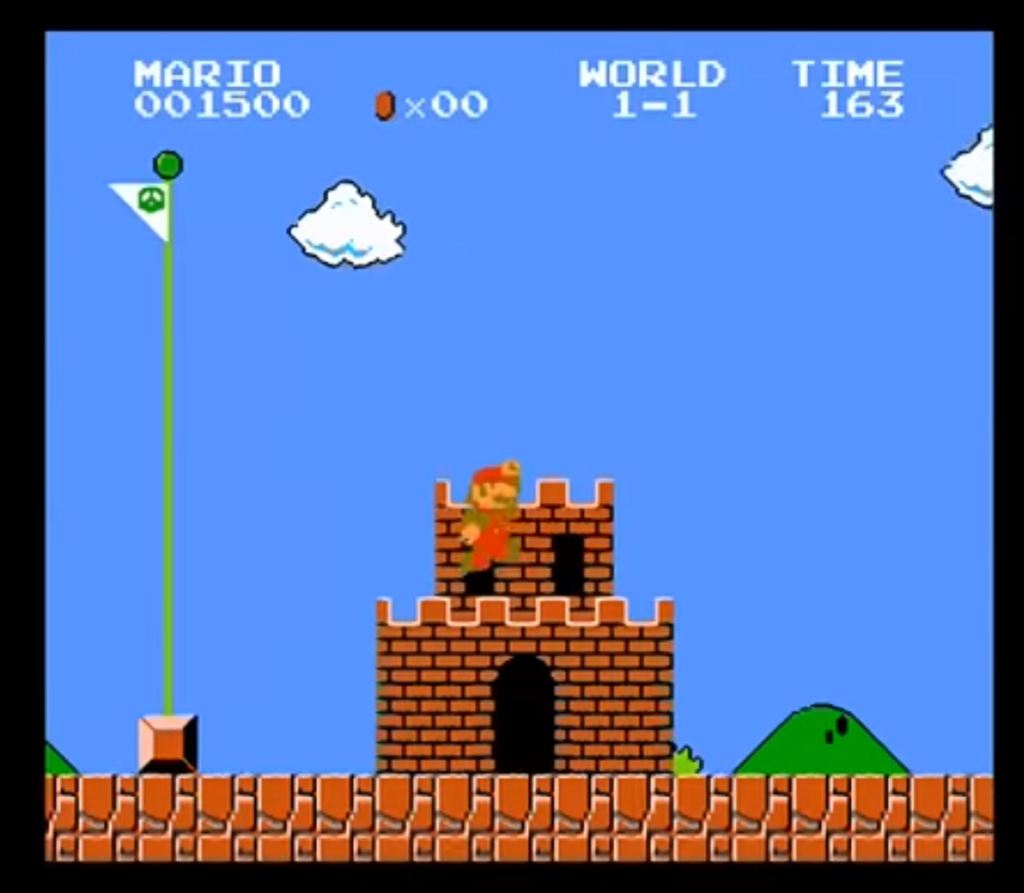
3. You Can Jump Over the Flagpole in Super Mario Bros.
Jumping over the flag pole in Super Mario Bros. is a lot like swinging so hard that you actually complete a loop over the swing set. They’re two things that people used to talk about on the playground but seemed to be impossible. However, it turns out that at least one of those long-held childhood beliefs is actually partially true.
Yes, you can actually jump over the flag pole in Super Mario Bros. by following a specific series of steps in certain levels (most notably, Levels 1-1 and 3-3). While it feels great to learn those techniques and finally clear the top of the end-game flag pole, you should know that your excitement for pulling off the “impossible” will likely be short-lived. It turns out that jumping over the flag pole triggers a glitch that forces Mario to run purposelessly in an infinite version of the level.
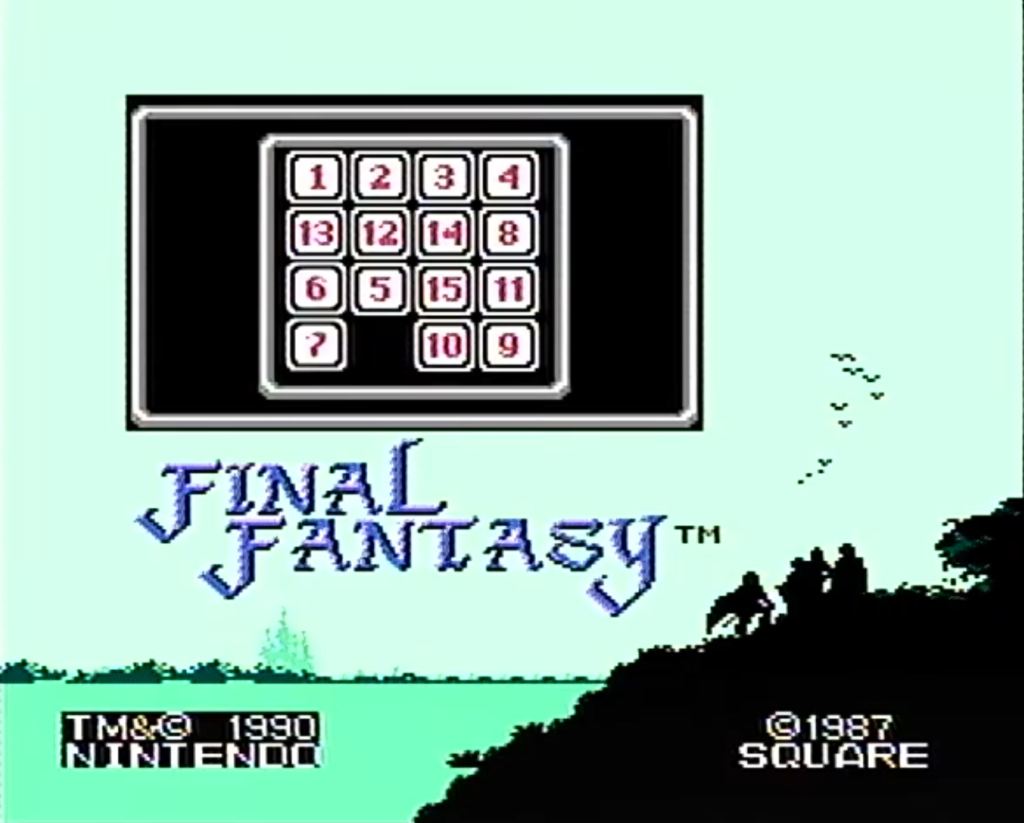
2. Final Fantasy Features a Very Well-Hidden Puzzle
The original Final Fantasy is a true NES epic that offers dozens of hours of gameplay at a time when most console games were actually surprisingly short. If for whatever reason those dozens of hours of adventuring aren’t enough for you, though, then you’ll be thrilled to know that Final Fantasy contains a secret minigame puzzle.
Once you’ve obtained and boarded the ship in the NES version of Final Fantasy, press the “A” and “B” buttons together 55 times. While that probably sounds like a cruel trick, completing that lengthy task will allow you to play a special tile sliding puzzle game that challenges you with placing a series of marked squares in numerical order. Doing so rewards you with some extra Gil. Interestingly, this puzzle exists in many future ports of the game, but the prizes for completing it in those ports are generally much greater.
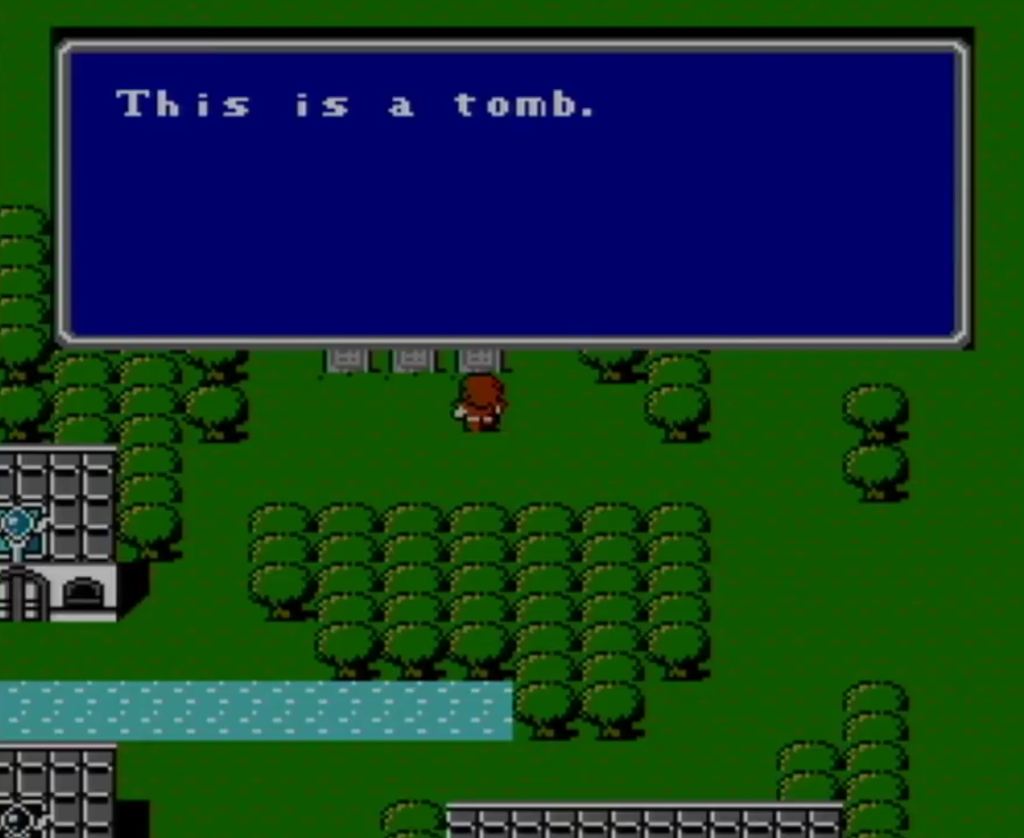
1. A Long-Running Final Fantasy Easter Egg References Dragon Quest and The Legend of Zelda
I hesitated to put two Final Fantasy secrets on this list, but this is the kind of truly wild Easter egg that every retro gamer needs to know about.
In the Famicom version of Final Fantasy, the town of Elfheim contains a well-hidden grave that reads “Here Lies Link.” As you probably guessed, that’s a reference to The Legend of Zelda’s elf-like protagonist. However, legend has it that Nintendo of America wasn’t thrilled about that reference and asked Square Enix to change it. As such, the gravestone in the NES version of that game instead reads “Here Lies Erdrick,” which is actually a reference to the Western version of the Dragon Quest franchise.
What’s especially funny about that alteration is that the Famicom version of Zelda 2 also features a gravestone that references Loto: the Japanese name for Erdrick in the Dragon Quest series. It seems that everyone was having a bit of fun suggesting that their RPGs were going to be the “death” of Dragon Quest.
Remarkably, that’s not the end of this story. In subsequent remakes of Final Fantasy, Square actually changed the English version of the gravestone’s text so that it once again references Link. You can even find the reference to Link’s Easter egg death in the GBA version of the game. I guess Nintendo stopped fighting or Square was able to sneak that one by them.
